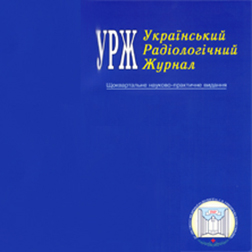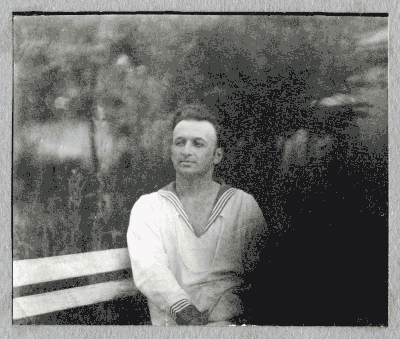UJR 2002, vol X, # 3

THE CONTENTS
2002, vol 10, № 3, page 232
R.J.Abdullajev
Influence of the character of myocardial hypertrophy on systolic and diastolic functions of the left ventricle in patients with stable angina
Annotation
Objective: To study the influence of myocardial hypertrophy in the left ventricle (MHLV) on its function in patients with stable angina and to reveal early signs of chronic heart failure (CHF).
Material and Methods: Intracardiac hemodynamics was studied in 108 patients, of them in 45 (41.7%) arterial hypertension (AH) and in 37 (34.3%) functional class I and II CHF were noted.
Results: The smallest ejection fraction (48.7±3.4%) and the largest size of the left atria (38.2±1.8 mm) were observed in patients with CHF with AH, the largest end diastolic size (EDS) (57.3±2.4 mm) in patients with CHF without AH. MHLV in patients with CHF without AH was eccentric. 2HD in this group was the lowest (0.36±0.04) and EDS/mm was the highest (0.56±0.03).
The lowest E/A and the highest isovolumic relaxation time (IRT) and blood flow deceleration time (BFDT) were present when CHF was accompanied by AH (0.71±0.07, 113±6, 228±5). In this group, AFF (40.2±1.7%) was significantly higher (р<0.05) than in the other groups. In them, the time of arterial flow ejection was the highest (36.4±0.9 ms). In IIa group, ejection fraction and Vcf were significantly less (p<0.05) than in Ia group (44.7±3.5% and 0.63±0.04). In patients of Ia group false normalization of diastolic filling was observed, E/A was 1.37±0.09, which was significantly higher (р<0.05) than the respective parameter in patients without CHF. In this group, IRT and BFDT were shorter (73±6 and 168±11). In patients of groups I and IIc diastolic dysfunction of the LV was of hypertrophic type, i.e. E/A was reduced, IRT and BFDT increased.
Conclusion: In stable angina, hypokinesia is revealed more frequently in patients with MHLV. Reduction of Vcf and pressure gradient between the LV and aorta as well as integral of linear velocity suggest hidden cardiac failure. EDS and ESS higher than the upper parameter of the normal range, total thickness of the LV walls higher 21 mm, IRT>90 ms, BFDT>206 ms, AFF>33%, EF reduced up to 50% and less are the early signs of CHF. Eccentric MHLV against a background of AH is often accompanied by false normalization of diastolic filling and suggests poor prognosis.
Key words: stable angina, hypokinesia, myocardium hypertrophy, systolic and diastolic dysfunction, left ventricle.
2002, vol 10, № 3, page 238
J.O.Pomortsev
The experience of x-ray diagnosis of Hirschsprung’s disease in children
Annotation
Objective: To compare the signs of different varieties of Hirschsprung’s disease which differ in the length of the aganglionar zone.
Material and Methods: X-ray findings of 7 cases of Hirschsprung’s disease (2 girls and 5 boys aged from 1 month to 5 years) were analyzed. Dosed hydrostatic irrigoscopy with atropine hypotonia and hypertonic contrast enema was used. The results of the x-ray study were verified during surgery and using histological techniques.
Results: Depending on the lengths of the aganglionar zone the cases of Hirschsprung’s disease were divided into 4 varieties. The 1st variety (1 case) was characterized by іnvolvement of the rectum from the splenic angle to the anal canal. Irrigogram in frontal projection which demonstrated direct and indirect signs of the disease was more informative. The 2nd variety included 3 cases with involvement of the rectum and sigmoid colon. In this case, informativity of the films in frontal and lateral projections was similar. In one patient, the signs of shortening of the horizontal portion of the rectum and approaching the axes of the anal canal and vertical portion of the rectum were absent. The 3rd variety included 1 case with agangliosis of the horizontal and vertical portion of the rectum. The most informative was lateral irrigogram which demonstrated all portion of the rectum without projectional distortions. Absence of demonstrative direct signs and necessity of thorough evaluation of indirect and x-ray functional signs of Hirschsprung’s disease were characteristic for this variety. The 4th variety included 2 cases with involvement of the horizontal portion of the rectum. The most informative were lateral films which demonstrated snail-like deformity of the rectum consisting in sharp narrowing, shortening and rigidity of the horizontal portion, widening of the vertical portion with sagging of the posteroinferior outline of the angle between the horizontal and vertical portions.
Conclusion: Dosed hydrostatic irrigoscopy with the use of drug hypotonia and hypertonic contrast enema allows to make a correct diagnosis of different varieties of Hirschsprung’s disease. Determining x-ray signs of the four x-ray varieties of Hirschsprung’s disease can facilitate x-ray diagnosis of the disease. Snail-like deformity of the rectum characterizes the 4th variety of the disease, i.e. that involving the horizontal portion of the rectum.
Key words: x-ray study, Hirschsprung’s disease, aganglionar zone.
2002, vol 10, № 3, page 244
N.A.Mitrjaeva V.P.Starenkiy M.A.Ishahova V.I.Starikov
Bombesin expression in patients with lung cancer during radiotherapy
Annotation
Objective: To study bombesin expression in the blood of lung cancer (LC) patients during radiotherapy for evaluation of the possibility to use the tumor marker for monitoring radiotherapy (RT) efficacy.
Material and Methods: The study involved 89 LC patients aged 47–70 undergoing and 40 patients with non-specific chronic lung diseases (NCLD) aged 35 – 66 (controls). According to the cellular structure of the tumor the patients were divided as follows: squamous cell lung cancer (SCLC) – 27 (30.3%), small-cell LC (SCLC) – 37 (41.6%), adenocarcinoma – 25 persons (28.1%). All patients were examined before the treatment and after radiotherapy course. Total exposure dose was 35 – 45 Gy (traditional fractionation). To study B levels commercially available Bombesin 125I-Ria-kit (DRG, USA) were used. Human chorionic gonadotropin (HCG) was evaluated using Immunotech kit (Russia). Ca-125 was revealed using IEA kit (Diatec, USA), prostatic specific antigen was determined with IEA kit produced by Microwell (USA).
Results: When compared with the other tumor markers bombesin demonstarted 80% sensitivity as a marker of SCLC. B level correlated with the tumor process during RT.
Conclusion: Bombesin is a marker with high specificity to LC. It allows to perform monitoring of RT efficacy in SCLC and SCLC. It is important to determine B level before and after the treatment. High B level during RT is un unfavourable prognostic sign.
Key words: bombesin, radiotherapy, small cell lung cancer, squamous cell lung cancer, monitoring.
2002, vol 10, № 3, page 249
S.V.Antonjuk O.S.Kotsarev O.A.Liholat
Pathomorphological changes of the lungs at continuous low-dose irradiation
Annotation
Objective: Complex investigation of the morphofunctional state of conductive and respiratory portions of the lungs in rats after chronic low dose irradiation.
Material and Methods: Wistar male rats were exposed to total x-ray irradiation at a dose of 0.25 Gy (0.01 Gy per day at dose rate of 1.67 mGy/min) for 25 days. After that the rat lungs were examined morphologically, morphometrically and using electron microscopy at the 1st day.
Results: Chronic low-dose irradiation caused activation of the adaptive mechanism of conductive and respiratory portions of the lungs which was manifested by development of chronic bronchitis with inflammatory changes. Chronic panacinar emphysema, degenerative-destructive and compensatory-adaptive changes in the air-blood barrier developed in the respiratory portions of the lungs.
Conclusion: Morphological changes of the lungs after chronic low-dose irradiation have non-specific character and can be caused by radiation and accumulation of metabolic products followed by high level of function of the lungs.
Key words: chronic irradiation, low dose, chronic bronchitis, pulmonary emphysema.
2002, vol 10, № 3, page 254
J.M.Mamotjuk O.P.Lukashova O.K.Kononenko S.I.Revenkova V.A. Gusakova
Hematological, morphological and ultrastructure effects of simultaneous action of cyclophosphane and metal organic complex on intact rats
Annotation
Objective: To study the disturbances in the system of hemopoiesis in the mucous membrane of the small intestine as well as liver and lungs at administration of high doses of cyclophosphane and to evaluate antitoxic influence of metal organic drugs.
Material and Methods: Seventy rats weighing 160–200 g were used to study the action of cyclophosphane at a total dose of 80 mg/kg of the body mass and the effect of metal organic complex administered at a dose of 25 mg/kg before and after the cytostatic administration. Hematological changes, bone marrow cells, liver structure, lung and small intestine ultrastructure were studied on the 3rd, 7th and 14th days.
Results: The toxic dose of cyclophosphane inhibited bone marrow hemopoiesis, reduced the level of leukocytes in the blood and caused ultrastructure disturbances in the cells of the lungs and small intestine of the rats.
The use of complex metal organic preparation preserved the ultrastructure of pneumocytes and enterocytes, and produced the foci of extramedullar hemopoiesis in the liver. Its action on restoration of myeloblasts was insignificant. The preparation accelerated restoration of the leukocyte count in the blood up to the initial level and activated protective macrophag and lymphocyte reaction in the tissues of the organism.
Conclusion: In intact rats, the drug reduces the toxic effect of cyclophosphane on hemopoiesis as well as the cells of the lungs, small intestine and liver and stimulates macrophages and lymphocytes.
Key words: cyclophosphane, toxicity prevention, hematology, ultrastructure, tissue morphology.
Social networks
News and Events
We are proud to announce the annual scientific conference of young scientists with the international participation, dedicated to the Day of Science in Ukraine. The conference will be held on 20th of May, 2016 and hosted by L.T. Malaya National Therapy Institute, NAMS of Ukraine together with Grigoriev Institute for medical Radiology, NAMS of Ukraine. The leading topic of conference is prophylaxis of the non-infectious disease in different branched of medicine.
of the scientific conference with the international participation, dedicated to the Science Day, «CONTRIBUTION OF YOUNG PROFESSIONALS TO THE DEVELOPMENT OF MEDICAL SCIENCE AND PRACTICE: NEW PERSPECTIVES»
We are proud to announce the scientific conference of young scientists with the international participation, dedicated to the Science Day in Ukraine that is scheduled to take place May 15, 2014 at the GI “L.T. Malaya National Therapy Institute of the National academy of medical sciences of Ukraine”. The conference program will include the symposium "From nutrition to healthy lifestyle: a view of young scientists" dedicated to the 169th anniversary of the I.I. Mechnikov.
Ukrainian Journal of Radiology and Oncology
Since 1993 the Institute became the founder and publisher of "Ukrainian Journal of Radiology and Oncology”:


